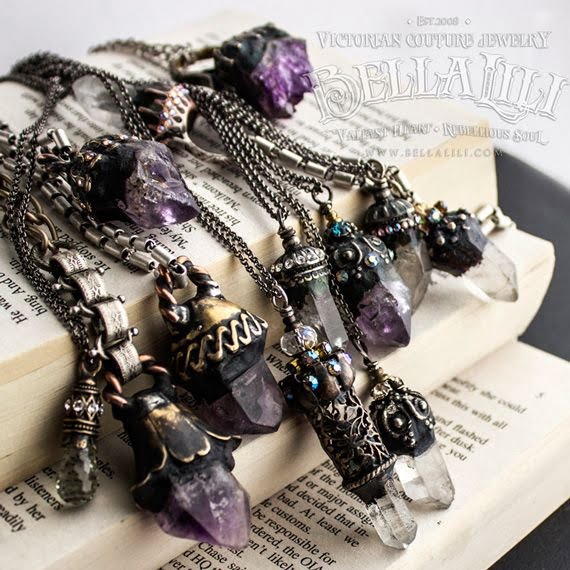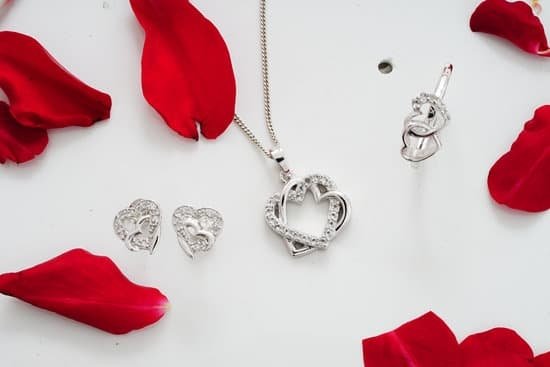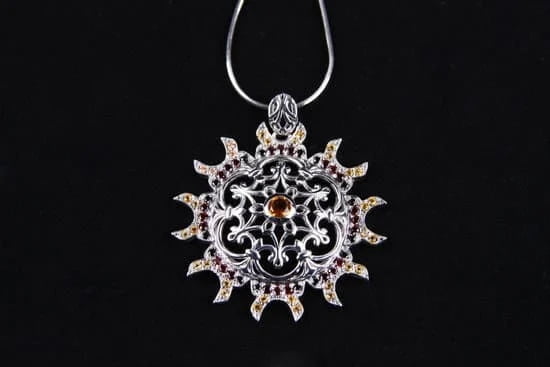Introduction to DIY Jewelry Armoire
DIY jewelry armoires provide stylish, effective and convenient storage for all of your precious jewelry, accessories, and collectibles. Unlike traditional storage options such as a box or drawer, an armoire allows you to organize items by type and have them easily accessible when you need them. With adjustable shelves and dividers, you can customize the interior of your armoire to fit any type of collection. Not only do they look great in any bedroom or walk-in closet, but they also protect delicate items from becoming damaged or tangled over time. Many people also enjoy the creative process of building their own jewelry armoire from scratch—it’s a rewarding task that takes just a few simple steps and supplies. Whether it’s for yourself or a friend, creating your own DIY jewelry armoire is sure to bring joy for years to come!
Types of DIY Jewelry Armoires
Freestanding Jewelry Armoires: A freestanding jewelry armoire is a piece of furniture which sits on the floor and is designed for storing jewelry. They range from small, two-door cabinets to larger six-drawer chests. They provide a great way of organizing and storing jewelry because they usually offer plenty of storage space, with drawers, compartments and baskets for different types of pieces. Freestanding Jewelry Armoires can also be more decorative than some other types, adding beauty to any room. However, as they take up some floor space, these armoires are not ideal in rooms with limited space.
Wall-Mounted Jewelry Armoires: A wall-mounted jewelry armoire is hung directly on the wall and can be closed or open depending on preference. This type of armoire provides great convenience as they save on floor space while adding decor to a room. They can come with shelves, drawers or both depending on storage needs and often come in ornate or minimalistic designs to fit different décor themes. However since they are mounted onto the wall they can be more challenging to install, especially if you have limited DIY skills.
Built In Jewelry Armoire: If you have some carpentry skills you may want to consider creating your own built-in jewelry armoire into an existing piece of furniture such as an old wardrobe or dresser. With good measurements, sanding down rough edges and the right materials this type of armoire can add extra storage while blending in perfectly into the style of your home’s interior design. As this type of armoire requires major construction work it may be best left to professionals if you don’t have prior experience in carpentry projects.
Materials Needed for DIY Jewelry Armoire
Materials Needed:
• Plywood for the frame and shelves
• Sliding or hinged doors (decorative, clear glass preferred)
• Such as knob sets and hinges
• Soft-close door slides (optional but recommended)
• MDF (Medium Density Fiberboard) or particle board for the drawers and back panel
• Pre-made dowels for the dividers in each drawer and shelf
• 4 heavy duty hook-and-eye closure sets
• Wooden Molding to trim around edges, if desired
• Sandpaper
• Primer and paint (if desired)
Tools Needed:
• Jigsaw/Circular saw
• Drill/Driver with bit sets – include a paddle bit if installing sliding doors, as well as Phillips head bits
• Hammer and nails
• Tape measure, framing square, level
Recommendations: Use durable plywood. The thicker the better. Overhang the shelves slightly when cutting so the finished product has smooth edges. Choose “soft close” sliding door mechanisms rather than standard sliders. This will help create a safe and secure product that won’t open unless you choose it to. Use wooden molding, rather than metal trim, to finish off any rough edges on your piece, giving it a more appealing look.
Step-by-Step Guide to Building a DIY Jewelry Armoire
Step 1: Choose Materials for Your DIY Jewelry Armoire
When deciding which materials to use for your DIY jewelry armoire, it is important to consider the size, style, and functionality of the armoire you want to construct. Wooden materials such as pine, cherry, oak, and walnut are popular options because they are strong and durable, but price will vary based on type of wood. If you’re looking to save money or reduce construction time, you can opt for a pre-made jewelry box instead.
Step 2: Cut Wood Pieces for Your Armoire
Using a saw or circular saw according to the measurements given in your plans, accurately cut the pieces needed for your armoire’s frame and drawers out of the selected material. Make sure all pieces are securely fastened together with screws before continuing to next step.
Step 3: Build Door Frame
Using your chosen wood material and plan measurements, build a frame that fits inside the cabinet opening where you’d like your armoire door to eventually fit. You can use different types of hardware like hinges or knobs in order accomplish this part.
Step 4: Measure and Create Drawer Slots
Once the frame is finished and firmly attached inside the cabinet opening (nail if necessary), measure out where you want your drawers slotted into place in order form part of the armoire’s body. Use clamps or tape measure if necessary during this exercise as accuracy of measurements here will provide better stability down the road. Cut slots big enough for drawers out of wood using either a saw or router machine. Nail all pieces into place using hardware made specifically for this purpose (available at most home improvement stores).
Step 5: Construct Drawer Boxes
Once slots have been made in preparation for drawers, begin constructing drawer boxes according to plan specifications detailed out earlier on by measure four sides that make up each separate box and join them together using glue or small nails + wood screws designed specifically for this job (available at most hardware stores). Utilizing strict measurements during this process should result in near perfect fitting boxes that slip easily into pre-cut slots built earlier on inside main armoire body as planned when initially started building project.
Step 6: Finish Touches + Troubleshooting Tips
Sand all edges once complete construction has been finished along with adding any embellishments desired like handles + knobs mentioned earlier on during first steps involved in making DIY jewelry armoire! In case any issues appear throughout building stages listed here such as holes not lined up correctly etc., always re-measure placement before trying again just double check calculations were done right (a little extra caution goes long way!).
Finishing Touches for Your DIY Jewelry Armoire
Adding Paint
Adding paint is a great way to give your DIY jewelry armoire a personalized touch. Choose the type of paint that best suits the environment where you will display the armoire—if it will be in a bathroom, choose a water resistant paint! Next, prepare the surface before you begin painting – dusty surfaces should be wiped down while wood surfaces should first be sanded. Apply one to two coats of paint, allowing at least eight hours for drying time between each application.
Decals
Decals can help turn your jewelry armoire into something special and unique. Start by selecting the place on the armoire where you want to put the decal. Clean and prepare this area with rubbing alcohol, making sure there are no smudges or dirt left behind. Follow any additional instructions included in your decal package—like cutting out each piece if applicable—before affixing them onto the armoire with some adhesive products like spray mount or glue dots. Be sure you position each piece exactly where you want it and push firmly on it so that it sticks well enough to stay in place after you hang up the armoire.
Personal Touches
Be creative when adding personal touches to your DIY jewelry armoire! Use plate magnets to display photos or cards on the outside of your armoire. Add a small frame incorporating an image of nature or use tacks or nails with colored beads or felt balls attached – you could even add fabric flowers embroidered just for this DIY project! You might also include stickers, tape strip decorations, rhinestones, and more on your jewelry armoire’s design according to your personal style. Finally, consider labeling certain sections of drawers with inspirational sayings or words that make you happy each time you open them up for easy access storage!
Creative DIY Jewelry Armoire Patterns & Projects
A great way to utilize a DIY jewelry armoire is to give it a stylish shabby chic look, with distressed paint and sweet rustic hardware. Another idea is to upcycle an old toy box into a beautiful storage piece for necklaces and other accessories. For a repurposing project, use an old china cabinet or media stand and turn it into an organized jewelry showcase. If you want something more modern, try painting the armoire white or pastel colors and adding colorful flower decals. A bold DIY project would be to add lighting around the edges of the unit and mirror backing so that it doubles as both a jewelry case and dressing room mirror. With some woodworking skills, you can build your own customized armoire with drawers, compartments or cubbies – the possibilities are endless!
Conclusion
Creating a DIY jewelry armoire is an easy and cost-effective way of creating the perfect storage solution for your jewelry. The steps are simple and accessible to all – from choosing a suitable piece of furniture to give your armoire a unique style, to preparing and painting it with designs of your choice. You can also utilize a few pieces of felt or fabric to line the inside of the drawers, creating additional protection for your accessories. Finally, you can accessorize with knobs or decals to add some extra detail. With this process, you have created the perfect storage solution to keep all your jewelry in one spot without spending too much money. DIY jewelry armoires are not just stylish; they are practical and cost-efficient too.

Welcome to my jewelry blog! My name is Sarah and I am the owner of this blog.
I love making jewelry and sharing my creations with others.
So whether you’re someone who loves wearing jewelry yourself or simply enjoys learning about it, be sure to check out my blog for insightful posts on everything related to this exciting topic!





